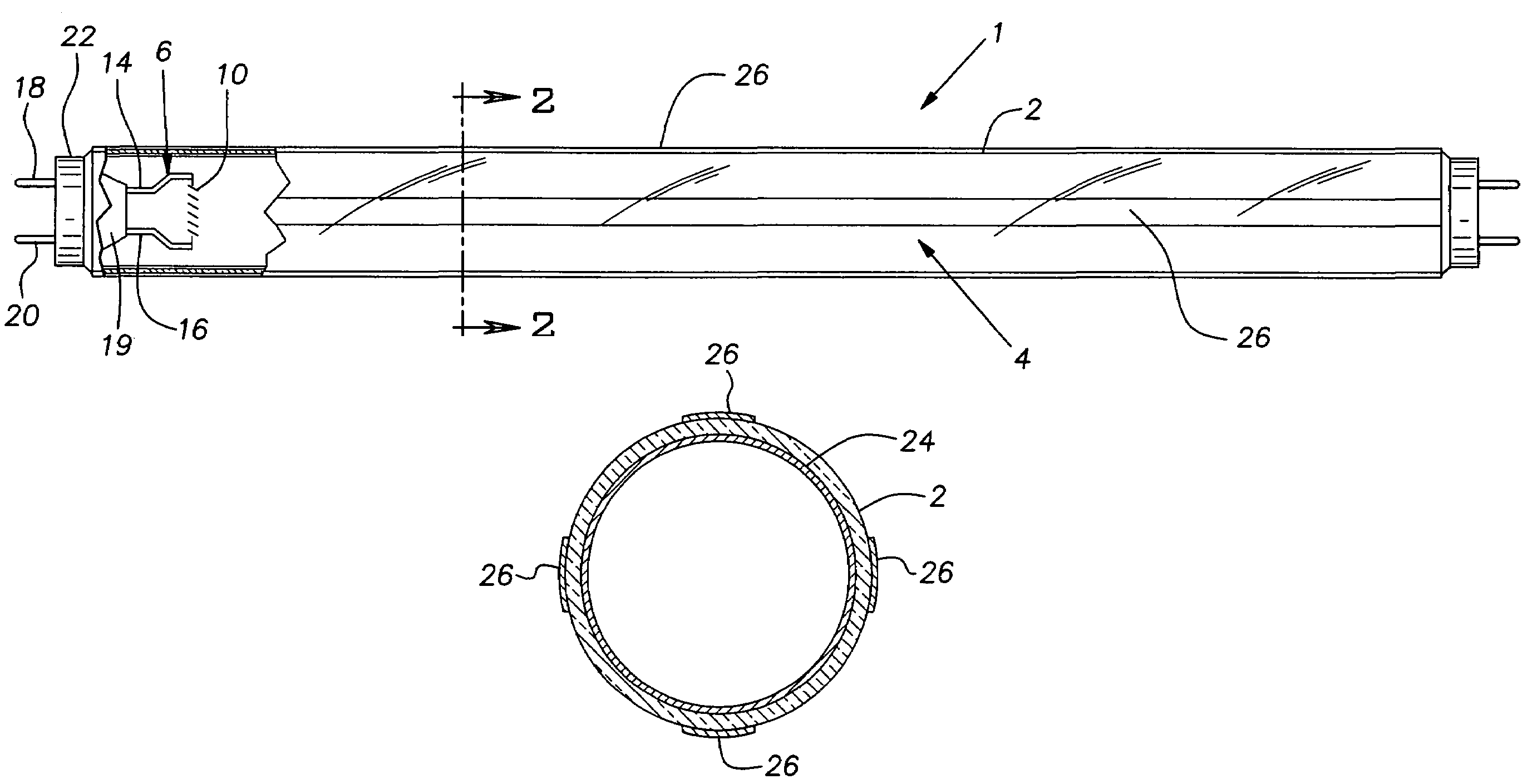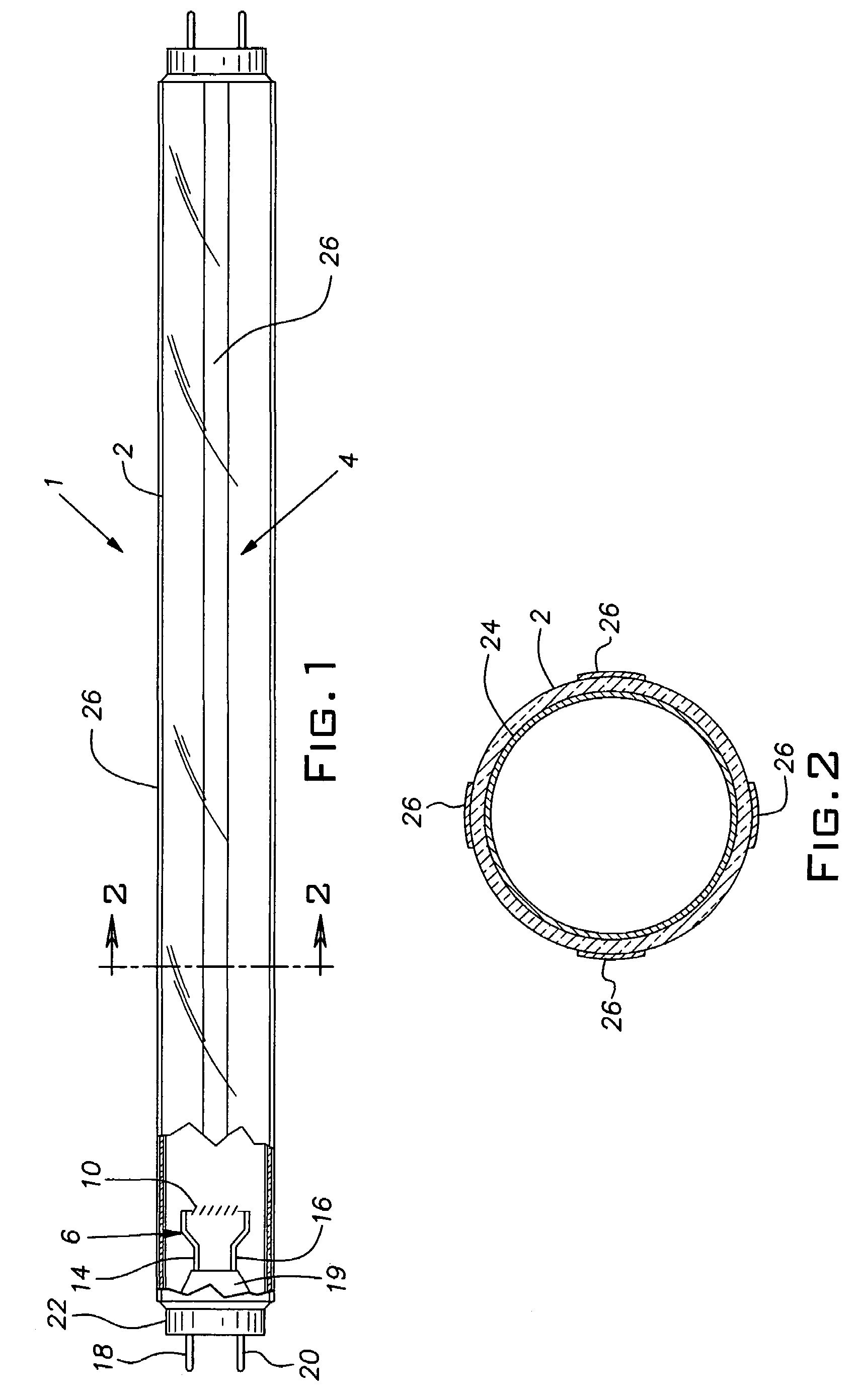Fluorescent lamp with conductive coating
a technology of conductive coating and fluorescent lamps, which is applied in the manufacture of tubes/lamp screens, low-pressure discharge lamps, gas-filled discharge tubes, etc., can solve the problems of reducing lamp life, difficulty in passing an electric current from one electrode to the other, fluorescent lamps, etc., and achieves the effect of reducing the electrical impedance of the current path and reducing the open circuit voltag
- Summary
- Abstract
- Description
- Claims
- Application Information
AI Technical Summary
Benefits of technology
Problems solved by technology
Method used
Image
Examples
Embodiment Construction
[0029]In the description that follows, reference is made to the electrically conductive materials of the invention as comprising transparent electrically conductive materials. The word transparent is not used herein in a limited sense to mean that the electrically conductive materials are capable of transmitting light as if the electrically conductive material were not present, although the invention is broad enough to cover electrically conductive materials of that kind. Rather, the word transparent is used in the more general sense to indicate that the materials are capable of transmitting light to a significant degree such as would be the case, for example, when the transparent electrically conductive material absorbs less than approximately one to two percent of the light emitted by the fluorescent lamp as mentioned in paragraphs [0013] and [0014] above.
[0030]As noted above, according to one aspect, the present invention concerns a fluorescent lamp that comprises a glass envelop...
PUM
 Login to View More
Login to View More Abstract
Description
Claims
Application Information
 Login to View More
Login to View More - R&D
- Intellectual Property
- Life Sciences
- Materials
- Tech Scout
- Unparalleled Data Quality
- Higher Quality Content
- 60% Fewer Hallucinations
Browse by: Latest US Patents, China's latest patents, Technical Efficacy Thesaurus, Application Domain, Technology Topic, Popular Technical Reports.
© 2025 PatSnap. All rights reserved.Legal|Privacy policy|Modern Slavery Act Transparency Statement|Sitemap|About US| Contact US: help@patsnap.com



